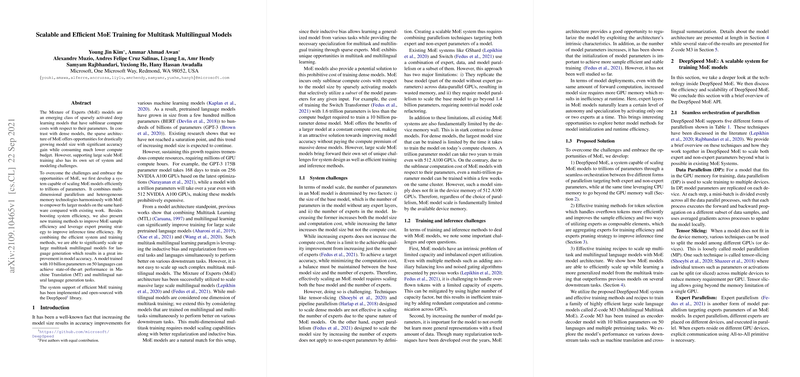Overview of Mixture of Experts (MoE) Models
Mixture of Experts (MoE) models represent a significant shift in machine learning, specifically in how they handle computational resources compared to dense models. With a conventional dense architecture, increasing model size inevitably demands higher computational costs. In contrast, MoE models can grow substantially in size without a directly proportional increase in compute expenses. Consequently, researchers can pursue substantial accuracy improvements without an exorbitant increase in computational requirements. Despite these advantages, large-scale MoE models introduce unique system and training challenges that need to be addressed to fully utilize their potential.
System Challenges in MoE Training
The central challenge in scaling MoE models derives from how their parameter count is distributed across the base and expert models. While increasing the base model size boosts both the number of parameters and computational cost, adding more experts inflates the parameter count but not the compute cost. Balancing the two is a delicate exercise essential for achieving high accuracy at a controlled computation cost. The proposed system, DeepSpeed MoE, addresses this by incorporating multi-dimensional parallelism and harnessing CPU memory to scale beyond GPU memory constraints, accommodating trillions of parameters.
Training and Inference Efficiency
MoE models have unique issues such as expert capacity limits and imbalanced usage of experts, which can hinder their learning potential. A novel training method introduced in this paper is Random Token Selection (RTS), which enhances token distribution and regularizes training for MoE models, leading to more efficient convergence. Furthermore, the paper presents Aggregation of Experts (AoE) and expert pruning strategies to quicken model convergence and inference time, making the models more practical for real-world applications.
Multitask Multilingual MoE Model Performance
The paper also explores the multitask multilingual MoE model called Z-code M3, noting sizeable improvements in machine translation and multilingual natural language generation tasks. The Z-code M3 model, when pre-trained on a mix of tasks and languages, shows remarkable performance enhancements on downstream tasks. The ability to jointly leverage the inductive biases from multiple tasks and languages in an MoE framework proves to be a significant advantage over single-task-oriented models.
The results of this research demonstrate the promise of MoE models in creating more efficient and capable AI systems. Despite their complexity, the strategies for overcoming the challenges related to scale, training, and inference efficiency make MoE models an exciting area for future developments in machine learning. The paper's contribution, including the development of the scalable DeepSpeed MoE system, is likely to influence subsequent efforts in building and optimizing large-scale MoE models.
